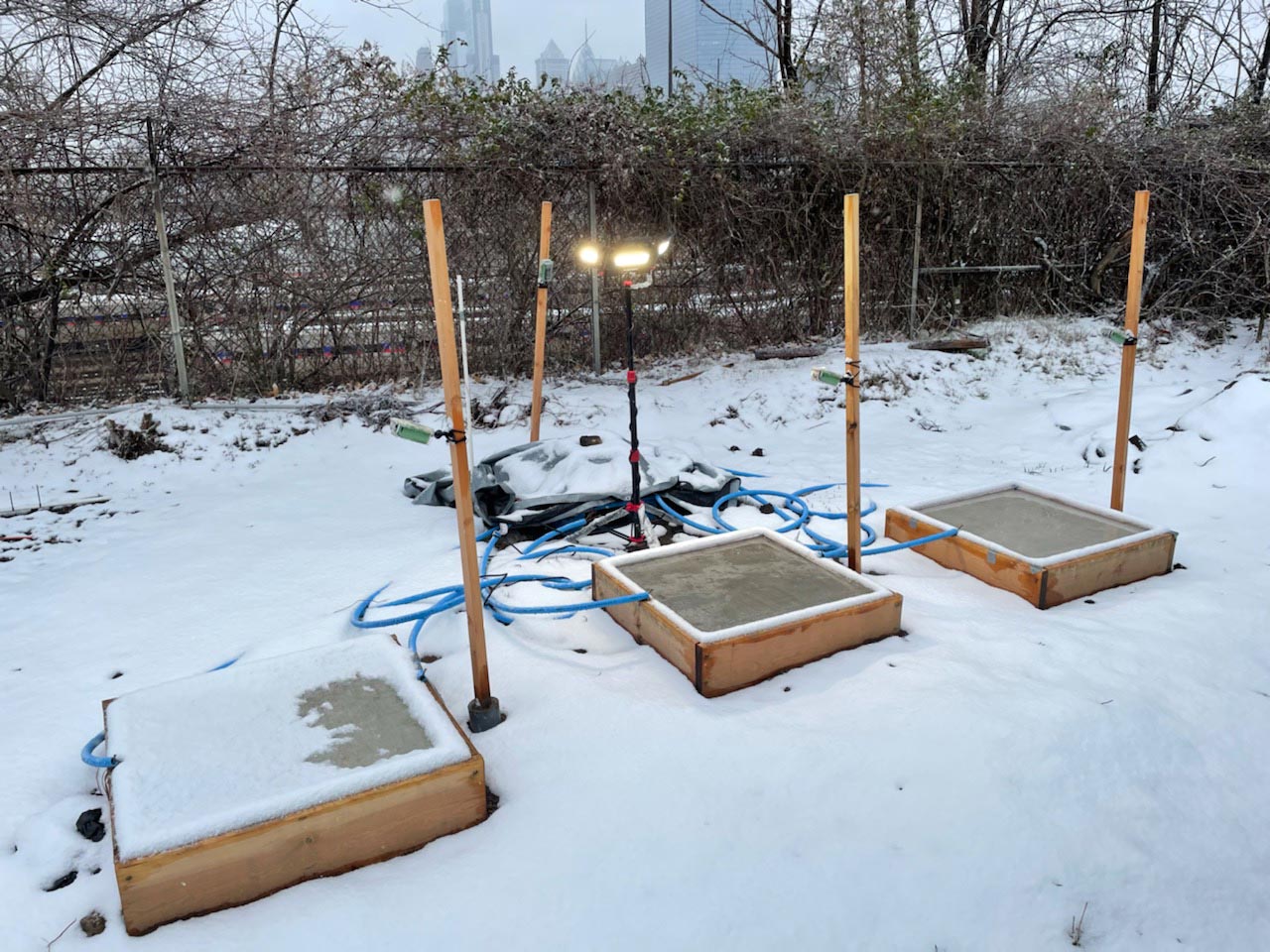This innovative concrete naturally melts ice and snow: how?
Published by Adrien,
Source: Journal of Materials in Civil Engineering
Other Languages: FR, DE, ES, PT
Source: Journal of Materials in Civil Engineering
Other Languages: FR, DE, ES, PT
Follow us on Google News (click on ☆)

Hidden near a parking lot on campus, this concrete has proven over more than three years its ability to repel snow, sleet, and freezing rain without human intervention.
This concrete is part of an initiative to create more resilient and environmentally friendly infrastructures, especially in the northern regions of the United States where snow removal and winter road repairs cost billions of dollars. By incorporating special materials, this concrete keeps its surface above 32°F (0°C), thereby reducing the need for snow removal and salting, and consequently, surface wear.
The secret to this concrete lies in the use of low-temperature paraffin, a phase change material that releases heat when it transitions from liquid to solid in response to a drop in temperatures.

Researchers at Drexel University tested concrete slabs containing phase change material capable of self-heating to melt snow and ice.
From left to right: reference slab, slab containing lightweight aggregate treated with phase change material; slab containing microencapsulated phase change material.
Credit: Drexel University
The research compared two methods of incorporating the paraffin: by treating a porous lightweight aggregate, or by directly mixing microcapsules of paraffin into the concrete. The results showed effectiveness in maintaining a surface temperature between 41.9°F and 55.04°F, capable of melting several inches of snow.
Although the lightweight aggregate concrete showed an ability to maintain its temperature longer, both approaches require improvements to optimize snow melting and de-icing. Researchers continue to study the long-term efficiency of these materials and are seeking to improve the system for greater durability against freeze-thaw cycles.